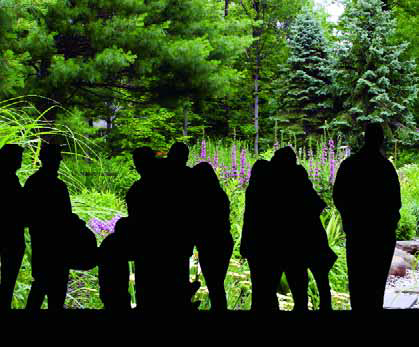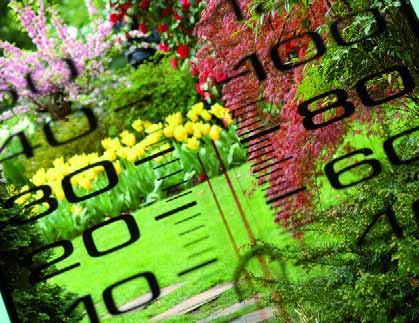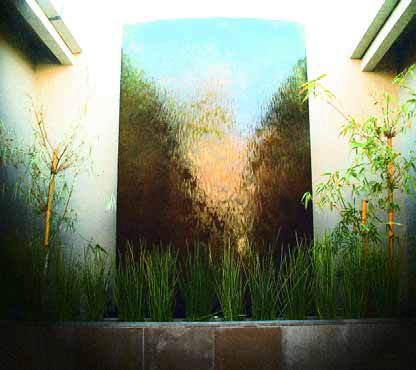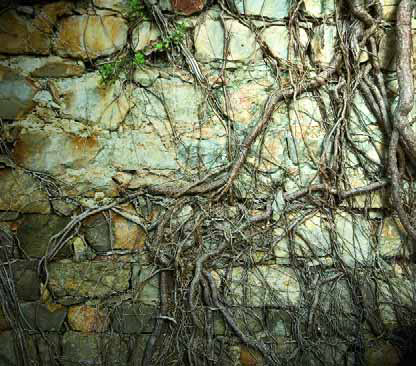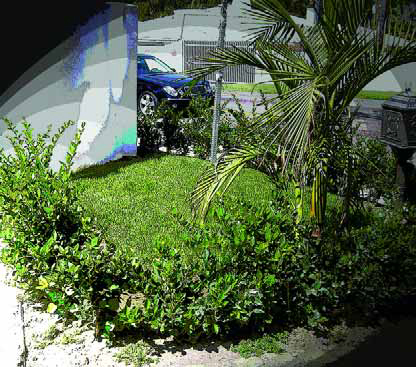Natural Companions
With spring upon us, calendars of local events are filling up with garden tours of all shapes and sizes. From large estate tours and special events at botanical gardens to tours of wonderful neighborhoods staged by local garden clubs, there's much to be seen while wandering through the grounds and yards and viewing the work of other designers and architects. I've always enjoyed these tours and learn something from each and every one, whether it's about a new plant or plant combination or an installation technique shared by a generous designer or installer who's on hand for that purpose. On a completely business note, I also have to say that some of my best-ever
As much as I love cold weather, I have to concede that we experienced way too much of a good thing this past winter. Long periods of extremely cold weather are the norm in many other parts of the country, and plants survive. Here, however, our local plants may be accustomed to surviving the isolated sub-freezing night, but sustained, frosty temperatures lasting nearly a week are something they weren't meant to handle. I'm sure you've seen the results of our cold snap in the news: Much of the state's citrus population - yes, coincidentally, the wonderful treats I wrote about in last month's column - has sustained long-term damage and the trees in many cases will take two years and more to recover. And that doesn't just affect us here: The rippling effects will be felt in
As much as I love cold weather, I have to concede that we experienced way too much of a good thing this past winter. Long periods of extremely cold weather are the norm in many other parts of the country, and plants survive. Here, however, our local plants may be accustomed to surviving the isolated sub-freezing night, but sustained, frosty temperatures lasting nearly a week are something they weren't meant to handle. I'm sure you've seen the results of our cold snap in the news: Much of the state's citrus population - yes, coincidentally, the wonderful treats I wrote about in last month's column - has sustained long-term damage and the trees in many cases will take two years and more to recover. And that doesn't just affect us here: The rippling effects will be felt in
For years, I refused to eat tangerines and oranges because I hated the seeds. It was too much work to peel off the rind and then sift through the sections and pull out the seeds before finally getting to the juicy, delicious part of the fruit. I opted instead to get my Vitamin C from other sources. One winter several years ago, my attitude changed after I was handed a Satsuma tangerine. Surprised at how easy it was to peel and even more stunned by the absence of seeds, I savored the fruit's sweetness and enjoyed a more natural form of vitamin intake. In fact, I found myself devouring
For years, I refused to eat tangerines and oranges because I hated the seeds. It was too much work to peel off the rind and then sift through the sections and pull out the seeds before finally getting to the juicy, delicious part of the fruit. I opted instead to get my Vitamin C from other sources. One winter several years ago, my attitude changed after I was handed a Satsuma tangerine. Surprised at how easy it was to peel and even more stunned by the absence of seeds, I savored the fruit's sweetness and enjoyed a more natural form of vitamin intake. In fact, I found myself devouring
Many watershapers have a single-minded focus, doing all they can to deliver quality shells and surrounding decks to their clients. Quite often, however, that narrow focus means that inadequate space is left for planting - a problem I face quite often as a landshaper. It's clear in many cases that no thought at all was given to the landscape - and certain that no design professional was consulted before laying out and installing the hardscape. The result all too often is that there simply isn't enough room to allow for good-size planter beds. I often find myself rolling my eyes and lamenting the missed opportunities to
Many watershapers have a single-minded focus, doing all they can to deliver quality shells and surrounding decks to their clients. Quite often, however, that narrow focus means that inadequate space is left for planting - a problem I face quite often as a landshaper. It's clear in many cases that no thought at all was given to the landscape - and certain that no design professional was consulted before laying out and installing the hardscape. The result all too often is that there simply isn't enough room to allow for good-size planter beds. I often find myself rolling my eyes and lamenting the missed opportunities to
On just about any site, we run into hidden obstacles - everything from underground pipes or leftover debris from other construction to myriad other surprises - and many of them are easily dealt with either by removing the barriers or redirecting things around them. But what happens when the obstacle is alive and growing and you can't remove it or escape from it? In these situations, you have to do your research, get creative and, above all, take the matter seriously. Case in point is a garden I'm designing for a project with David Tisherman - the one discussed previously where I'm developing a white
On just about any site, we run into hidden obstacles - everything from underground pipes or leftover debris from other construction to myriad other surprises - and many of them are easily dealt with either by removing the barriers or redirecting things around them. But what happens when the obstacle is alive and growing and you can't remove it or escape from it? In these situations, you have to do your research, get creative and, above all, take the matter seriously. Case in point is a garden I'm designing for a project with David Tisherman - the one discussed previously where I'm developing a white
I'm not a big believer in conformity, strict rules and absolutes, but sometimes in my travels I'll come across something that, well, is just wrong. These aren't matters of taste, style, or visual appeal: What I see is just plain wrong! Whether we classify ourselves as watershapers or landscape professionals, we collaborate with our clients to create spaces that appeal to them both visually and emotionally - environments that fit sets of needs and wants they have conveyed to us. Generally, we will find that there are certain colors that appeal to them, design styles they prefer, budgets they can afford, physical limitations to the site and codes by which they must abide. For all that, it's our professional responsibility to guide them within those parameters to a design that










